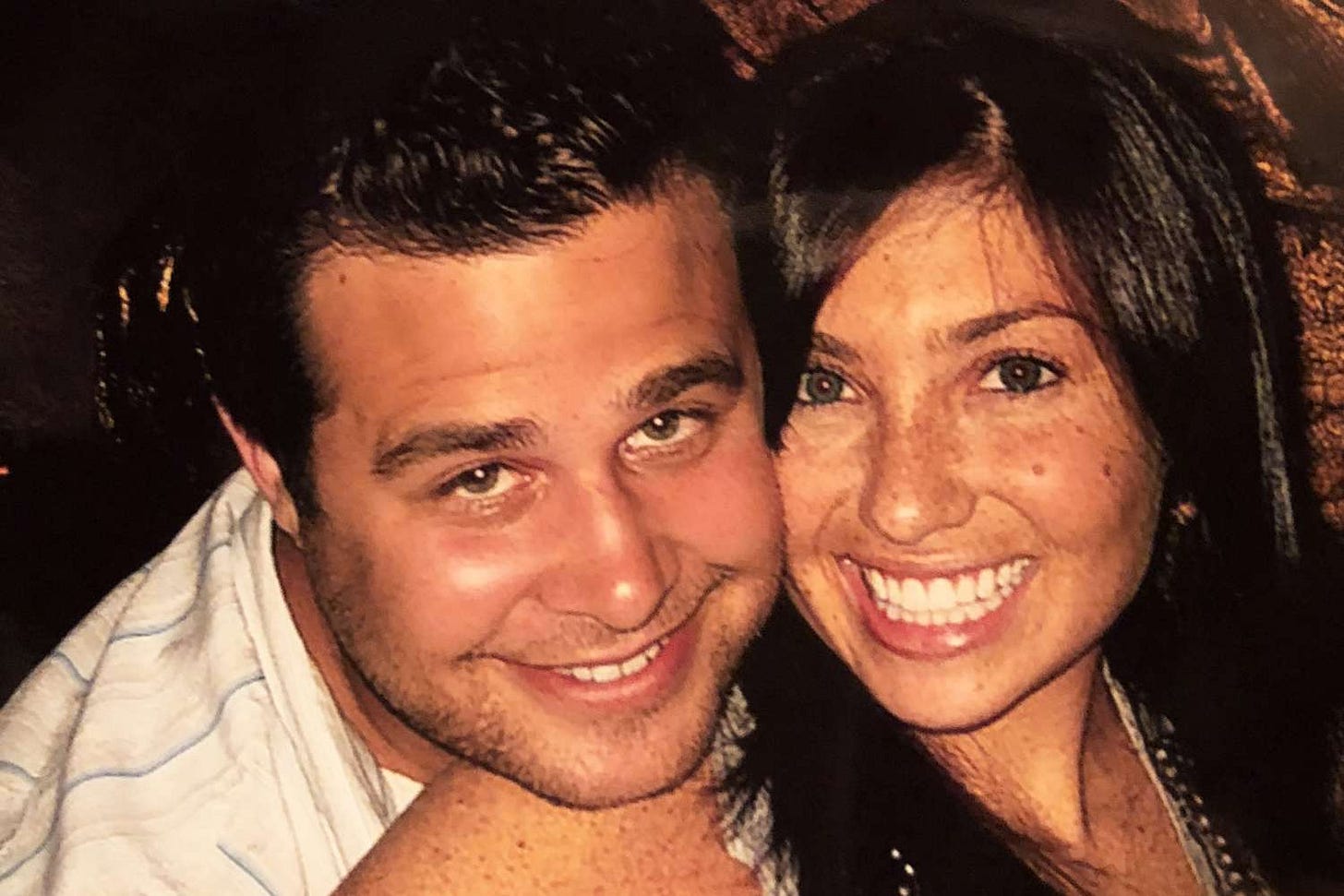When 27-year-old Philadelphia teacher Ellen Rae Greenberg was found dead in her Philadelphia city apartment on January 26, 2011, the scene made no sense. The Ellen Rae Greenberg death case revealed she had 20 stab wounds — including 10 to the back of her neck and head — and a kitchen knife lodged in her chest. Despite the violent nature of her injuries, her death was ruled a suicide, a decision that has divided forensic scientists, enraged her parents, and sparked one of the most explosive legal battles in recent American cold case history. Nearly 14 years later, controversy erupted again in October 2025 when the Philadelphia Medical Examiner’s Office reaffirmed that Ellen Rae’s cause of death was suicide — despite years of public outcry, new forensic analysis, and claims of investigative corruption. To many, this is not just a tragic death — it’s a cover-up.
Who Was Ellen Rae Greenberg? 💔
Ellen Rae was a beloved first-grade teacher at Juniata Park Academy in Philadelphia. Friends described her as warm, calm, and kind — the sort of teacher who kept snacks in her desk for hungry kids and handmade Christmas ornaments for her students. She was engaged to be married to her fiancé, Samuel “Sam” Goldberg, and the couple appeared on track for a typical future: careers, marriage, and stability. They lived together in the upscale Venice Lofts apartments in Manayunk. Nothing about Ellen Rae suggested she was suicidal — and those who knew her best insist she wasn’t. What happened that snowy January night changed everything.
The Night of January 26, 2011 🌨️🔑
A massive snowstorm swept across Philadelphia. Ellen Rae left teaching early and returned to her apartment. Her fiancé Sam later claimed he went to the gym and, upon returning, found himself locked out of their apartment because the swing lock was on from the inside. He said Ellen Rae wasn’t responding to calls or texts. He reportedly kicked in the door (photos show minimal damage), found Ellen Rae unresponsive on the kitchen floor, and called 911. She was seated upright against the kitchen cabinets, a knife embedded in her chest. Paramedics declared her dead at the scene, marking a tragic teacher’s death in an apartment that would spark years of controversy.
The Autopsy That Started a War ⚠️
The autopsy revealed 20 stab wounds:
Chest
Abdomen
Neck
Head
Back
Some wounds penetrated deep into her skull. 11 bruises were also found on her body in various stages of healing, including on her arms, legs, and wrist. That suggested prior physical trauma, raising questions about a possible abusive relationship. Despite all this, the manner of death was first ruled homicide. But weeks later, after conversations between the Philadelphia Police Department and the Medical Examiner, the ruling on the death certificate was changed to suicide. Let that sink in:
👉 Twenty stab wounds 👉 Knife still in chest 👉 Wounds to the back of the neck and head 👉 And… suicide
Ellen Rae’s parents — Joshua and Sandra Greenberg — have been fighting that ruling ever since, seeking legal representation to challenge the official verdict.
The 2025 “Suicide” Reaffirmation 😡
In October 2025, Philadelphia’s Chief Medical Examiner Dr. Lindsay Simon released a new 32-page review of Ellen Rae’s cause of death. Instead of correcting the ruling, Simon defended it. She argued that:
Ellen Rae could have inflicted all 20 wounds herself.
There was no sign of forced entry.
There was no DNA from anyone else on the knife.
Ellen Rae had been taking anxiety medication.
Therefore, suicide was “the most reasonable conclusion.” Her parents called the review “an insult to science and to Ellen’s memory.” Their attorney, Joseph Podraza, accused the Medical Examiner’s Office of engaging in a cover-up to avoid admitting a botched investigation. He stated publicly: “Ellen did not kill herself. Somebody killed Ellen.”
What Makes This Case So Suspicious? 🚨
Even without a timeline or witness testimony, forensics can tell a story. But when you look at the physical evidence, that story doesn’t point to suicide — it screams staged scene.
🔴 Key Inconsistencies and Red Flags
1. Number and Location of Wounds
Ellen Rae had 20 stab wounds, including 10 to the back of her neck and head. These are not typical self-inflicted locations. Forensic scientists overwhelmingly agree that suicide by stabbing typically involves one or two wounds to the chest or abdomen — not a dozen scattered across the body. The presence of multiple wounds without clear hesitation wounds challenges the theory of self-inflicted injuries.
2. Defensive Wounds Ignored
Ellen Rae had bruising consistent with defensive injuries. If she were fighting for her life, that makes sense. If she were alone stabbing herself — why were there defensive bruises at all?
3. The Door Wasn’t Really “Locked”
Sam Goldberg claimed he was locked out because the swing lock was latched from inside. But forensic analysis later showed the lock could be manipulated from outside. That means someone could have staged the lock after Ellen died.
4. Minimal Blood at the Scene
Given the number and severity of Ellen Rae’s wounds, blood evidence was strangely limited. Many experts believe Ellen Rae may have been stabbed elsewhere and moved — or stabbed post-mortem, meaning her heart had already stopped.
5. The Knife Was Wiped
No DNA or fingerprints from anyone else were found on the knife. But no fingerprints from Ellen Rae were either — despite the Medical Examiner insisting she stabbed herself repeatedly. It appeared wiped.
6. The Medical Examiner Changed Their Story
The original ruling was homicide. It wasn’t changed after new forensic evidence — it was changed after meetings with police. Even the original pathologist who signed the suicide ruling later said publicly: “I no longer support that conclusion.” This raises serious questions about potential conflicts of interest in the investigation.
7. Psychological Profile Doesn’t Support Suicide
Ellen Rae had no history of self-harm or suicidal behavior. She was planning her wedding. She had a full fridge. She had just emailed a student about the next day’s lesson minutes before she died. None of it aligns with a suicidal mindset.
Why Would This Be Covered Up? 🧩
If Ellen Rae was murdered, a few troubling possibilities emerge:
Was the killer someone she knew?
Was law enforcement protecting someone?
Did investigators rush to close the case?
Would reopening it expose professional misconduct?
Many true crime analysts and Ellen Rae’s own legal team believe that once the “suicide” ruling was entered, the city dug in to avoid liability. Reversing it now would not only prove Ellen Rae was murdered — it would also prove authorities ignored a homicide for nearly 15 years. The lawsuit her parents filed also revealed missing case files, inconsistencies in reports, and unrecorded police communications. At one point, even a neuropathologist’s findings were omittedfrom the official file because they contradicted the suicide ruling. This wasn’t just sloppy work — this looked deliberate, raising concerns about the chain of custody for critical evidence and potential conflicts of interest.
The Man in the Middle: Sam Goldberg 🧩
Ellen Rae’s fiancé, Sam, found her body. Police said he cooperated fully and was never charged. But many questions remain:
Why did he kick the door instead of calling building security first?
Why did emails from his laptop get deleted after Ellen died?
Why have some of his statements changed over time?
To be clear — Sam has never been charged with any crime connected to Ellen Rae’s death. But Ellen Rae’s parents have openly questioned his behavior and timeline. Many observers feel he has never been fully cleared.
The 2025 Medical Review — A Second Failure
When the October 2025 ruling again called Ellen Rae’s death a suicide, the public response was outrage. Supporters called it a “paper shield” — a legal move designed to protect city officials rather than reveal truth. The review ignored independent forensic scientists, relied heavily on selective evidence, and framed Ellen Rae’s anxiety medication as proof she was suicidal — even though her own psychiatrist said she was not a suicide risk. The Medical Examiner even tried to claim that one of her spinal wounds might have happened during autopsy — a claim her family’s forensic team proved false.
Why This Case Matters 🔥
The Ellen Rae Greenberg case has become more than a suspicious death — it’s a symbol of everything broken in American forensic investigation:
Medical examiners influenced by police
Evidence mismanaged or suppressed
Suicide rulings used to avoid homicide investigations
Families forced to fight for truth — alone
For years, Ellen Rae’s parents have fought not for money, but for justice. They have said: “We will never stop. Ellen did not kill herself.” And looking at the evidence, they’re not wrong to demand answers.
Ellen Rae’s Legacy
Twenty stab wounds. Bruises. Knife wiped clean. Door that wasn’t really locked. An autopsy changed after police pressure. Expert after expert saying suicide was impossible. Yet the official story? She did it to herself. Case closed. To believe Ellen Rae committed suicide, you must ignore physics, forensics, crime scene science, and common sense. This is not a suicide. This is not even an unsolved mystery. This is an uninvestigated murder.
The case has garnered significant media coverage, including a Hulu documentary series that brought renewed attention to the inconsistencies in the official narrative. Renowned forensic scientist Dr. Cyril Wecht has publicly stated that the evidence points overwhelmingly to homicide, not suicide. The absence of crucial surveillance footage from the apartment complex has only fueled suspicions of a cover-up.
As the case continues to unfold, it serves as a stark reminder of the importance of thorough, unbiased forensic investigation and the need for transparency in our justice system. The fight for truth in the Ellen Rae Greenberg case may yet reach the Pennsylvania Supreme Court, as her family continues to seek answers and justice for their daughter.












